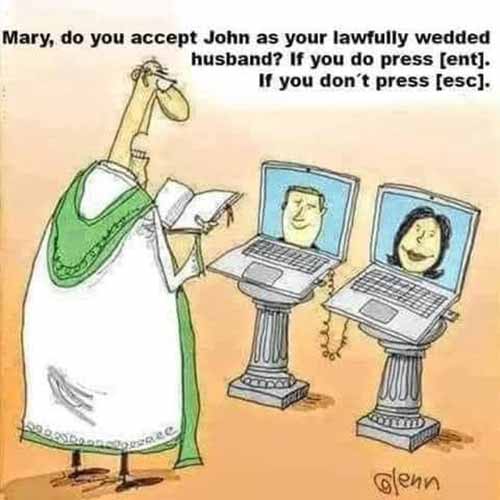
This is the third post in response to the paper by Bishop Tim Harris: The heart of the matter: Holy Communion, effective participation and virtual reality — some guidance from historical Anglican sacramental understanding.
Please first read this first post and this second post.
I come now to the concrete proposal by Tim in a footnote in his paper (footnote 2):
2. Brian Douglas, “Virtual Eucharists in a time of COVID-19 pandemic: biblical, theological and constitutional perspectives,” The Journal of Anglican Studies 18:2 (October 2020): 129 – 143, appeared after the writing of this paper. While I differ from Douglas at a number of points, his proposal of “spiritual communion” such that “the benefits of communion can be had by spiritual eating and drinking on the basis of faith” (see his “Possible Alternatives”) is not dissimilar to my own proposal. If, however, people are able to watch and observe a priestly-administered Eucharist to receive the benefits of communion by spiritual means without actually eating the consecrated bread and wine (as Douglas proposes), then surely a physical gesture of “receiving by faith” in the form of eating and drinking unconsecrated bread and wine at home need not compromise the capacity of the faithful to receive the benefits of communion by spiritual means. It becomes a potentially meaningful and personally symbolic action reflecting the “spiritual eating and drinking” as a pastoral measure in exceptional times.
I have not read Brian Douglas’ paper, but, from this footnote it seems that Brian is proposing Spiritual Communion as I do here. Tim rightly asks, if this is possible without eating bread and drinking wine, why might it not be possible to celebrate “Spiritual Communion” with bread and wine?
I think it is very important to note that Tim, in this footnote that we are examining explicitly has “eating and drinking UNCONSECRATED bread and wine” [MY EMPHASIS]. Having argued in his paper that consecration means ‘the bread and wine undergoing a change “not in substance, but in use,”’ he now indicates that bread and wine used at home in front of a virtual (or recorded?) priest going through the Eucharistic motions does not thereby consecrate the bread and wine. In other words, whilst one is using the bread and wine at home as an aid in one’s Spiritual Communion, this does not, thereby change the bread and wine “in use”! I think this is a major flaw in the theology of the paper. It highlights that the particular model of consecration that Tim argues for in his text is not robust enough to uphold a rigorously consistent eucharistic practice – including and especially when it comes to the concrete point of the paper: can we celebrate eucharist virtually?
Tim’s paper appears to promise more than it concretely delivers.
To be continued…
As well as the previous posts in this series, this first post and this second post,
and
Remote Consecration Part 1 (3 minutes reading time)
Remote Consecration Part 2 (5 minutes reading time)
Remote Consecration Part 3 (5 minutes reading time)
Remote Consecration Part 4 (4 minutes reading time)
Spiritual Communion
I encourage you to read
Christ’s Presence in the Eucharist and
Transubstantiation
.


